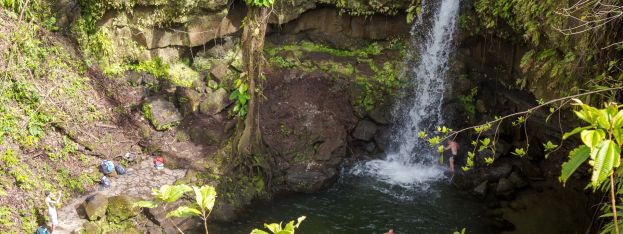
Best Caribbean islands for nature lovers
May 04, 2018
By: Melanie Reffes
Source: USA Today
Beloved for their world-class beaches, cocktails at sunset and chill-out time in a swaying hammock, the many islands that make up the Caribbean are remarkably diverse with plenty of different strokes for different folks. Next trip, head instead for the hills and the mountains, rainforests, gardens, bird sanctuaries and caves. You can always go back to the beach tomorrow.
Puerto Rico
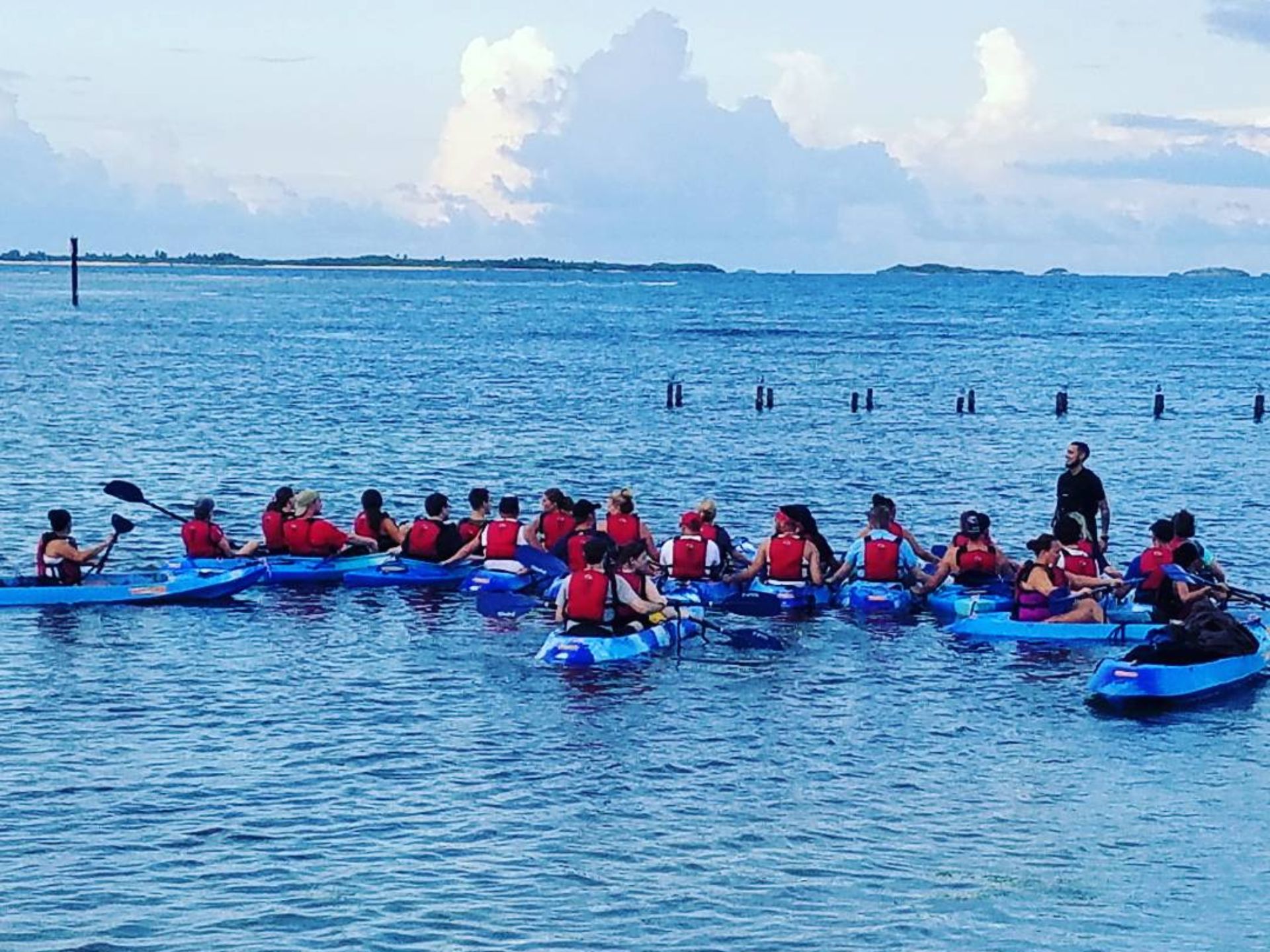
Photo: Kayaking through Bioluminescent Bay, Credit: PR Fun Tours
It is a mystical glow-in-the-dark experience seen in only five bioluminescent bays in the world: one in Jamaica, one in Vietnam and three in Puerto Rico — Laguna Grande, La Parguera and Mosquito Bay. Courtesy of millions of microscopic marine organisms that light up when they”re touched, the water looks a giant glow stick, and is especially dramatic from a kayak when your hands touch the waves surrounding the boat. With every stroke of a paddle, swirls of color with lots of blue-green lights sparkle in the dark.
Specializing in day trips, San Juan-based PR Fun Tours offers a two-hour Bioluminescent Bay Kayak Tour to Laguna Grande. Two-person glass-bottom kayaks enter through a mangrove that is part of the Cabezas de San Juan Nature Reserve in Fajardo on the northeast coast. “Very few people, even Puerto Ricans, are aware of our little-known bioluminescent lagoon,” said Erik Moccabee, owner of PR Fun Tours. “It’s best to go on a moonless night when we cover the kayaks with giant canvas tarps to block out any light, including that coming from the bright stars.” Tours cost $95 per person, and include transportation from the hotels in San Juan. Bring along insect repellent to ward off the mosquitoes buzzing around the mangroves when the sun sets.
Martinique
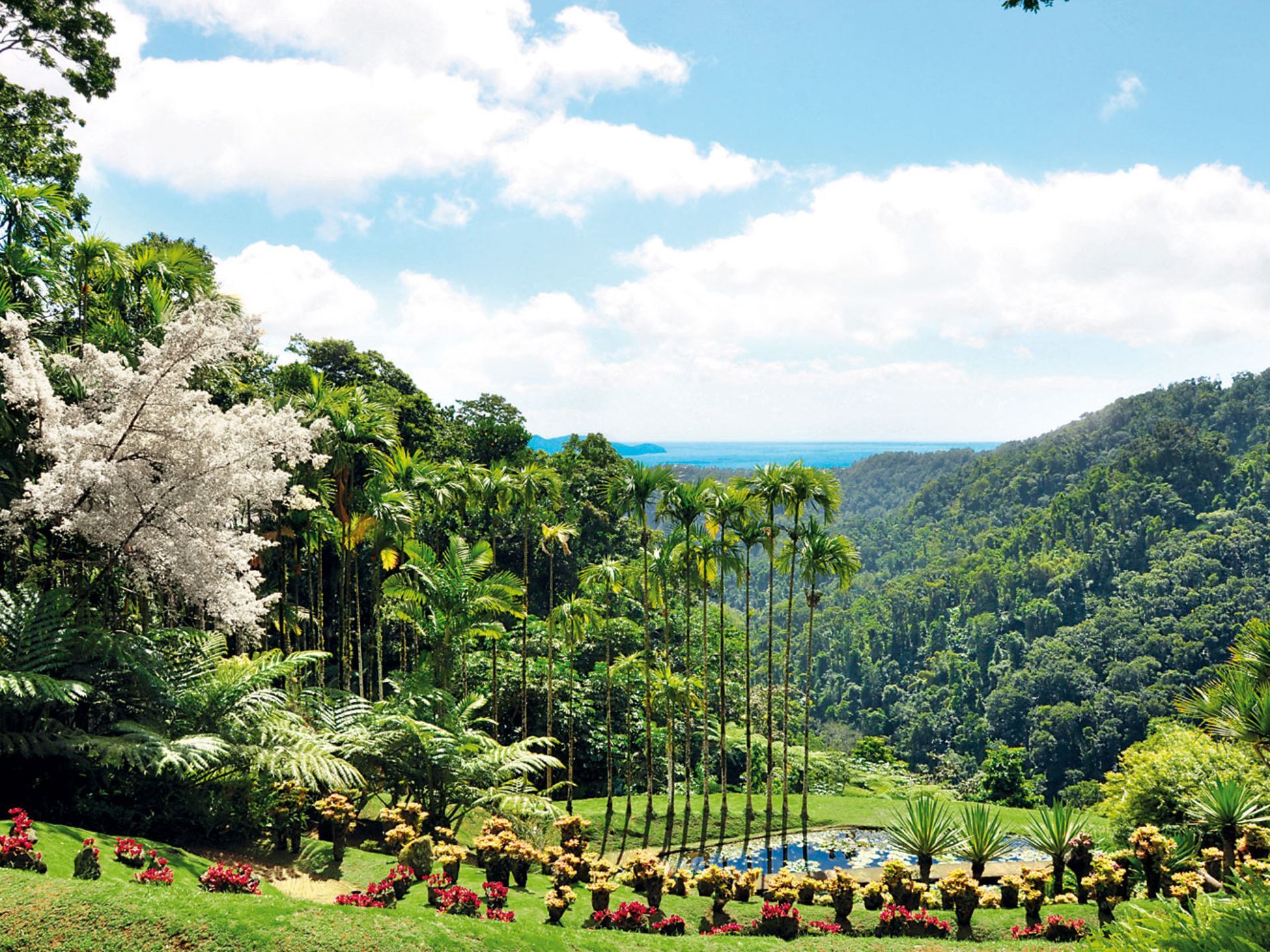
Photo: Fans of bright blooms make a beeline for the Jardin de Balata, Credit: jardindebalata.fr
A world away from the beaches and the baguettes, the petite French isle is a treasure trove of natural wonders bordering the Atlantic Ocean to the east and the Caribbean Sea to the west. Nicknamed the “Isle of Flowers,” fans of bright blooms make a beeline for the Jardin de Balata, a short drive from the capital city of Fort-de-France. An entrance fee of $17 buys an entire day inside the peaceful garden that hosts begonias, bamboo plants, palm trees, lily pad-lined koi pond and bouquets of tropical flowers. To see the biggest and oldest tree in the Lesser Antilles, head to Habitation Céron, also called the Remarkable Garden, where you’ll find a three-century-old Zamana tree with branches that span the distance of a city block. Les Trois-Ilets is a small town popular for forest walks, Sunday picnics and exploring the mangroves on a kayak. It’s also the birthplace of Joséphine, Napoléon Bonaparte’s first wife.
And there’s the mountain. Rising to nearly 4,600 feet above sea level, Mount Pelée is an active volcano that blew its top in 1902, blanketing the city of St. Pierre in a veil of toxic ash that killed more than 30,000 people. Little evidence remains of one of the worst volcanic disasters in history apart from the black sand on many of the beaches, courtesy of the rocks that toppled from the mountain. Named for the French words for bald mountain, hiking the steep cloud-shrouded hill via one of three trails takes a lot of fortitude and, although you can climb on your own, an escorted trek is recommended. The best time to start is 5 a.m., before the clouds cover the mountain, and the best season is the dry season, from February to May. Guides can be arranged at many of the hotels, tour companies or by contacting Martinican Association of Hiking Guides.
Anguilla
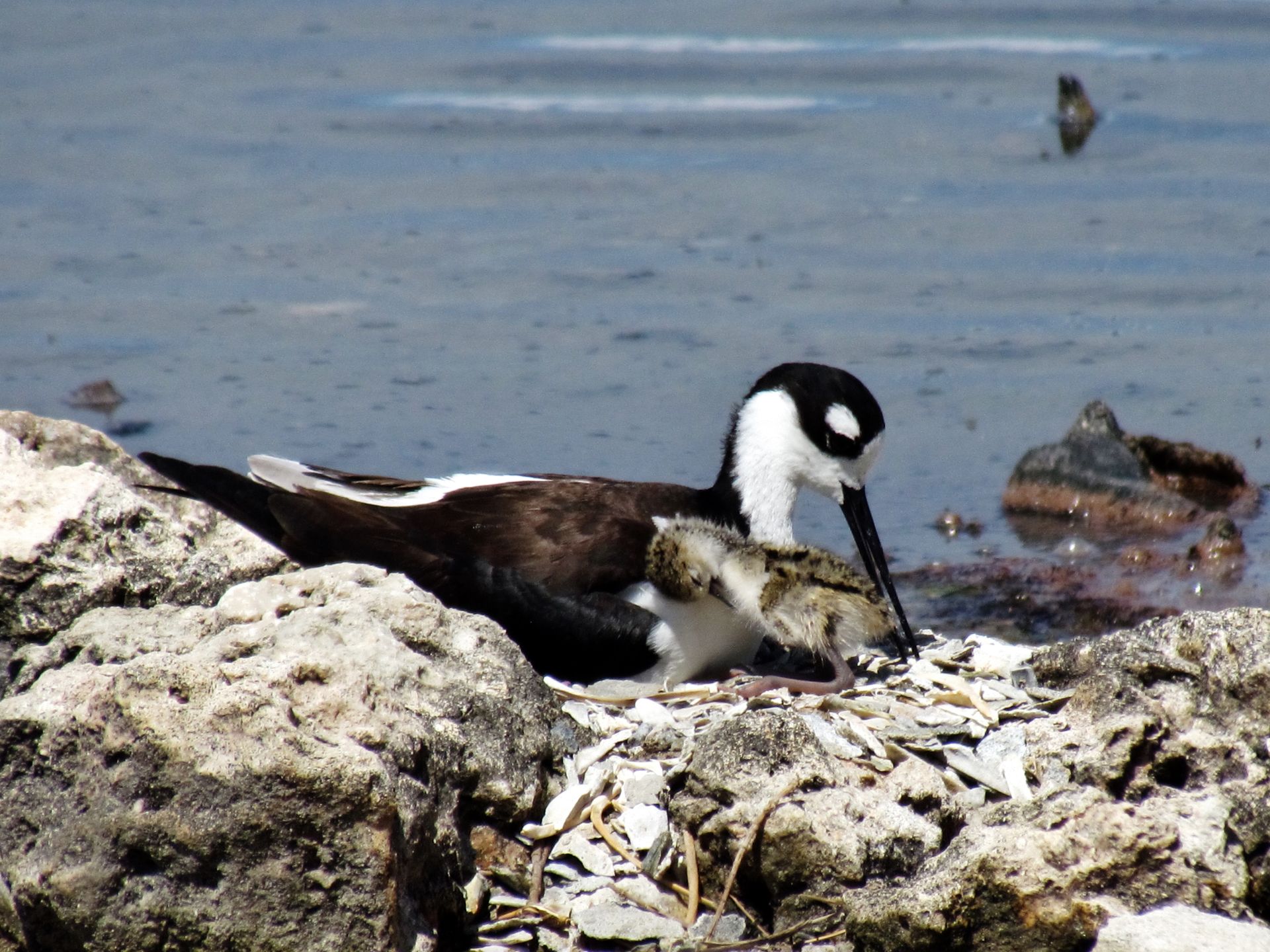
Photo: Black necked Stilt and Chick sharing a moment, Credit: Jacqueline A. Cestero
Founded in 2010 by an American expat who now calls the British island home, Nature Explorers Anguilla is the brainchild of avid birdwatcher and expert photographer Jacqueline Cestero, who takes tourists beyond the beaches and swanky resorts. The most popular excursions are bird-watching tours to the offshore cays and wetlands where brown boobies nest, black-necked stilts andlaughing gulls breed and tour-goers keep their eyes open for pink flamingos and hummingbirds with unique spiky head feathers. “One of my favorite spots is Dog Island,” says Cestero, referring to the furthest outlying cay. “This is the ‘Galapagos of the Caribbean’ with nesting seabirds including 113,000 pairs of sooty terns.”
Tours leave at 6:30 a.m., 8 a.m. and 2:45 p.m. The Wetland, Beach and History Tour includes lunch and snorkeling and for those interested in giving bird-watching a try, the Afternoon Sampler tour is a good bet. Priced between $50 and $165, tours include hotel pickup, binoculars and bottled water. In the wake of last year’s hurricane that took a toll on the islands natural resources, Nature Explorers Anguilla is donating all proceeds from its 2018 tours. Cestero promises “all income goes towards mangrove restoration particularly on the western end of the island.”
Dominica
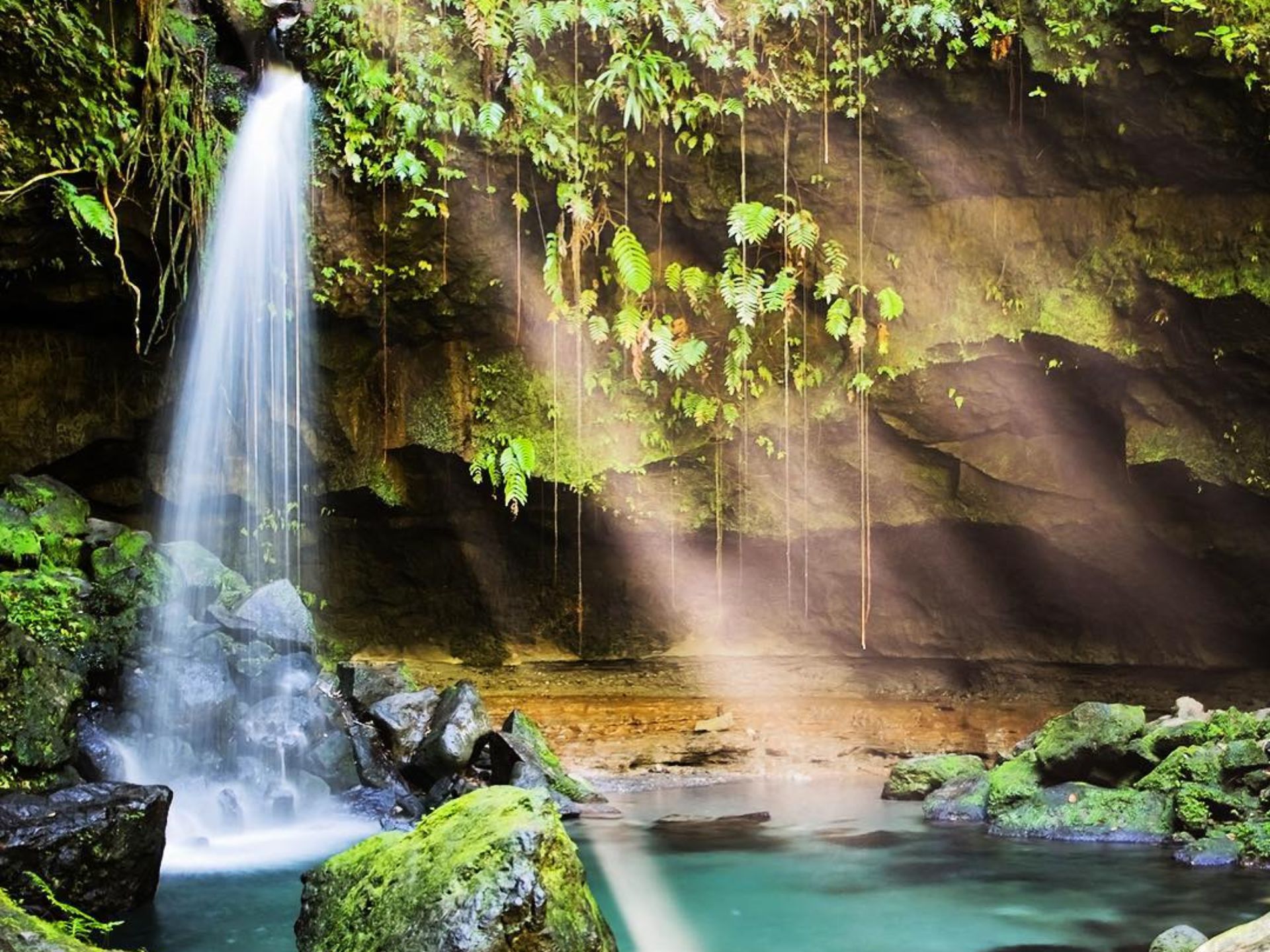
Photo: Morne Trois Pitons National Park, Credit: Trexploring
A few miles from Martinique to the south and Guadeloupe to the north, 19 of the 23 major natural attractions on the island aptly nicknamed the “Nature Island” are open after Hurricane Maria struck last September. There are day trips to the beaches and gardens and hiking to the interior mountain range that stands nearly 5,000 feet above sea level, but for those more interested in the road-less-traveled, the cascading waterfalls and gorges are the guaranteed crowd-pleasers. Formed eons ago as hot lava cooled and then split apart, Titou Gorge, or “Little Throat Hole” in Creole, is where Captain Jack and his crew tried to escape from the tribe in the film Pirates of the Caribbean: Dead Man”s Chest. Braving the chilly water is well worth the swim to a waterfall that sparkles from the light peering through the forest canopy. The hot spring that tumbles just outside the entrance is a welcome warm-up after a splash in the falls.
A one-hour hike into the heart of the Morne Trois Pitons National Park, the first UNESCO World Heritage Site in the eastern Caribbean and one of three national parks on the island, is where you’ll find Middleham Falls, with a narrow stream that drops 200-feet from a keyhole notch in the lip of the cliff. Also inside the national park, Emerald Pool takes its name from the water that appears green through the tree-filtered sunlight. The paths leading to the pool are super-quiet, with the foliage opening up to vistas of the mountains and the Atlantic Ocean. About a mile east of the picturesque village of Trafalgar, Trafalgar Falls are really twin falls called the Mother and Father Falls, which plunge 125 feet and 75 feet respectively. Along the way to the visitor center you’ll pass a warm spring that flows across the trail. Those more adventurous can keep walking to the smaller waterfall and the hot springs below the taller one. Tours are arranged at hotels and tour companies like Waitukubuli Adventure Tours (the island as it was called by the Kalinago indigenous people) and Ken’s Hinterland Adventure Tours.
Curacao
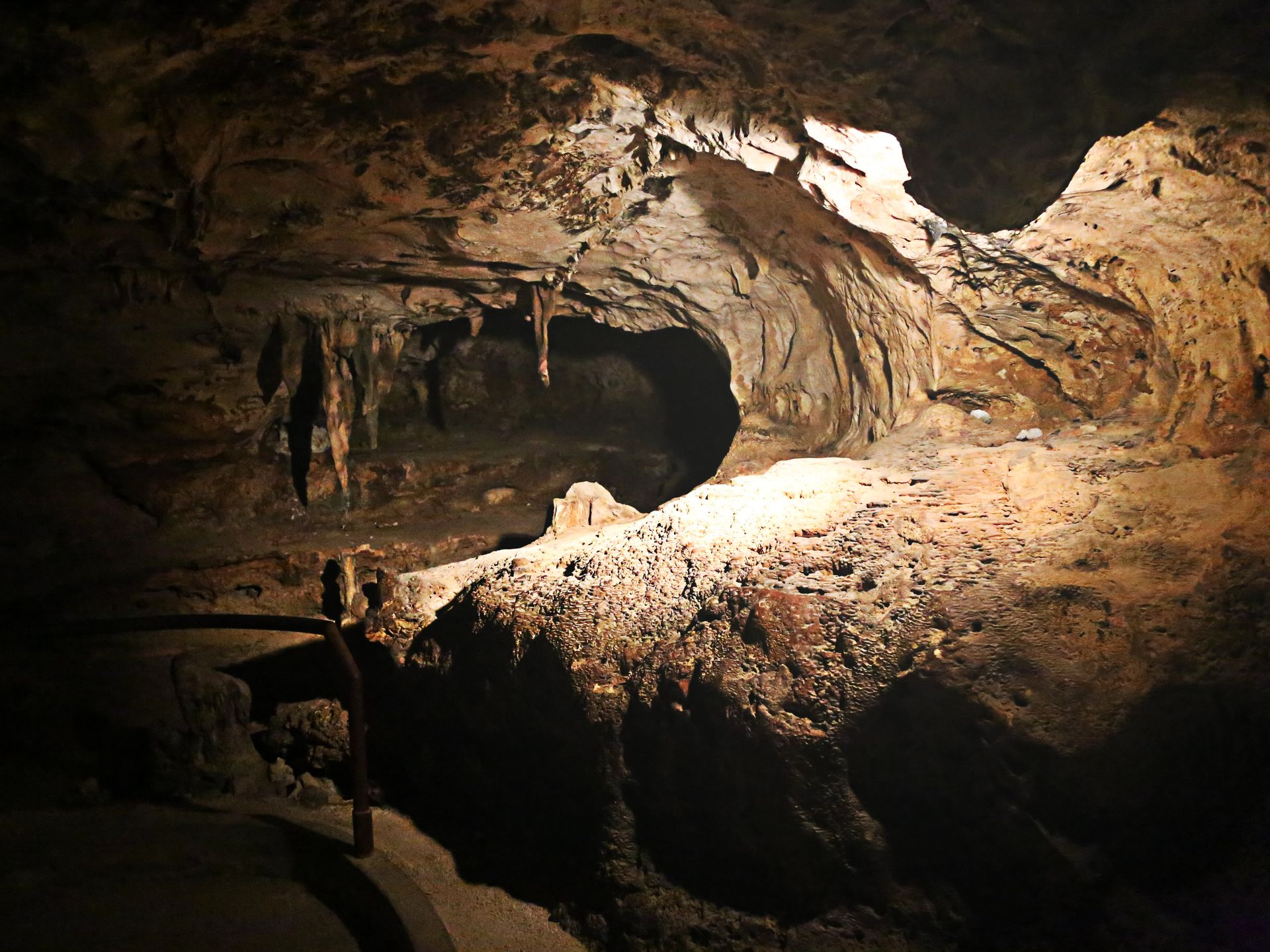
Photo: Hato Caves on northern side of the island, Credit: Curacao Tourist Board
On the northern side of the island, 1,500-year-old Hato Caves were once used as the hiding place for escaped slaves who lived underground for months at a time. Opened to the public in 1991 and upgraded with illuminated walkways and fans, the caves are home to waterfalls, elusive long-nose fruit bats, and drawings left behind by the Amerindian Arawaks. In the eerie lighting, some of the stalactites and stalagmites have morphed into notable shapes named Pirate”s Head, Sea Tortoise and the Giant. Tours are given every hour, with entrance fees $9 for adults and $7 for children.
On the eastern side of the island, Bika’s Caverns, or Spelonknan di Bika in the local language of Papiamentu, are also home to bats, although they prefer to flutter near the top of the caves that are separated by pockets of sunlight. Tours traverse the caves and to the lookout with mesmerizing 360-degree views of the island.
A hidden treasure on the west coast, Blue Room is an underwater cave accessible only through a narrow opening. Popular with snorkelers and scuba divers, the dome half-filled with clear water is a kaleidoscope of various shades of blue and green and the go-to spot for cavorting with schools of glassy-eyed sweeper fish.
Grenada
Photo: Grand Etang Lake in the old crater of Mount Qua Qua, Credit: summitpost.com
One of the best islands in the Caribbean to hike, Grenada is also one of the greenest. A siren’s call for adventure seekers, the eco-friendly island is where you’ll find countless hiking trails, waterfalls and wildlife. On the Atlantic side, start at the La Sagesse Nature Center with nature trails that wind through steamy forests and windy hills. High up in the mountains, Grand Etang Forest Reserve is where to go for hiking, bird-watching, river tubing and meet-and-greets with critters like armadillos, mongoose and Mona monkeys. A natural wonderland hosting four of the island’s tallest peaks and waterfalls that empty into pools for swimming, hikes range from an easy 30-minute jaunt to more rigorous treks that can take several hours. There’s a nominal entrance fee of $2 and for those preferring not to go it alone, guides are available at the Welcome Centre.
To hike with the like-minded, Island Routes” “Rainforest Hike Mount Qua Qua Tour” is a good bet for unrivaled panoramas of the Atlantic Ocean and Caribbean Sea. Worth the effort, the four-hour climb to the summit at 2,370 feet is strenuous and best suited to those with hiking experience. With water, sunscreen, insect repellent and snacks tucked inside a backpack, hands-free climbers snap photos of monkeys taking five and hummingbirds sipping nectar from the wild blossoms. Climbers are rewarded with a refreshing dip at the Annandale Waterfall on the way back down.
St. Lucia
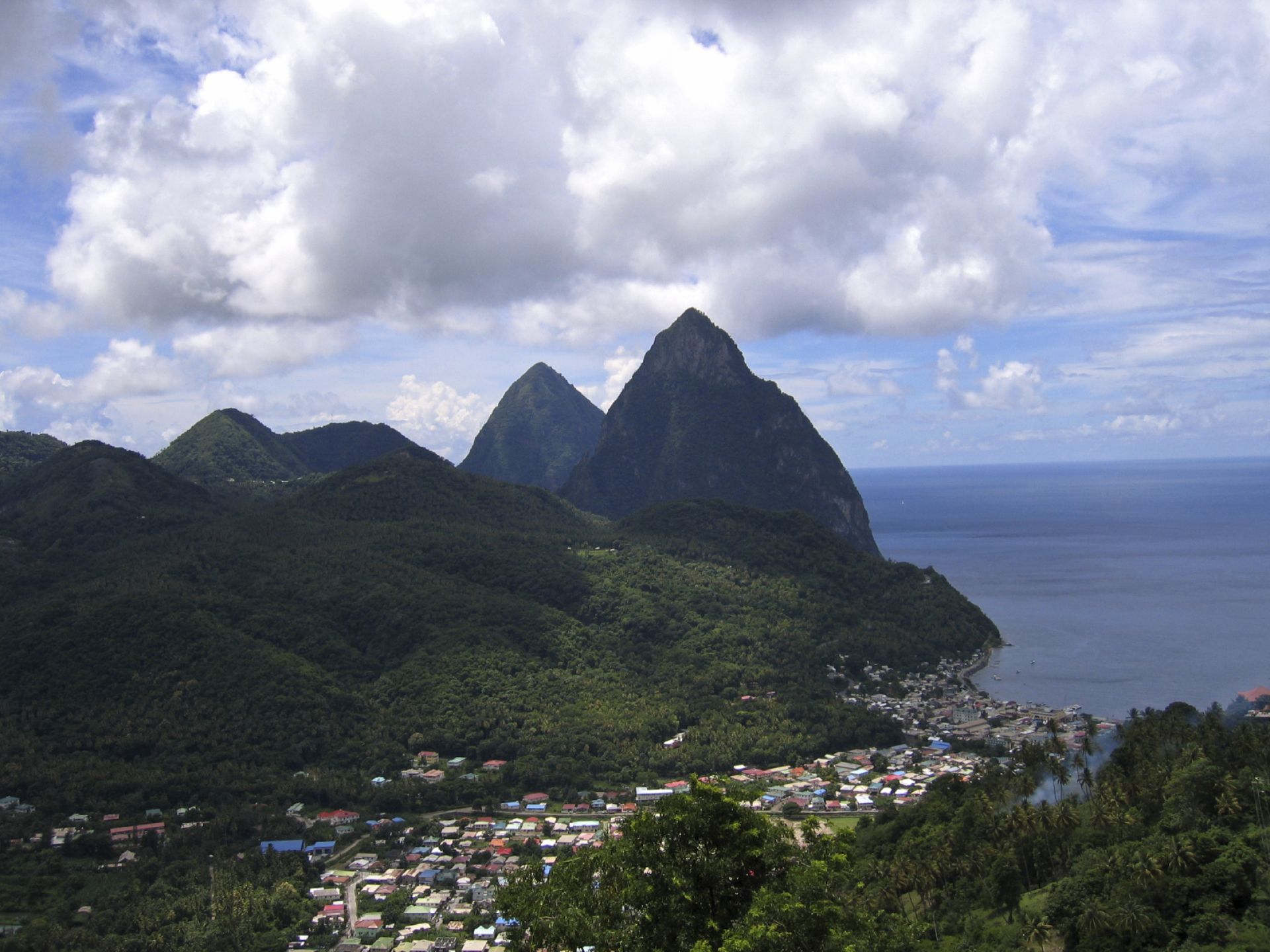
Photo: Hiking the Pitons is popular with adventure travellers, Credit: IRAT
The soaring Pitons are the marquee peaks often photographed for the covers of travel brochures. With vistas only a handful of locales can rival, ascending to the top of Gros Piton at 2,619 feet above sea level is a bucket-list mainstay and although there are plenty of guides to take you there, it’s the nature-path-less-traveled on the southeast coast that is worth checking out.
One of the island”s national treasures, the Maria Islands are accessible only to visitors who arrange a tour with the National Trust. Solo excursions are not allowed. Less than a mile from Pointe Sable, the twin islands (25-acre Maria Major and 4-acre Maria Minor) are a protected ecosystem 20 minutes by boat from the shore. As un-touristy as it gets with no frills and no amenities, tour-goers are encouraged to pack their own picnic lunch, sunscreen and snorkel gear. A nature reserve since 1982, doves, frigate birds and the cacti that grow on the cliffs are diligently protected. Not for the squeamish, the islands are also home to creepy crawlers like the world’s rarest snake, called the St. Lucia Racer, that slithers between the rock crevices, and the whiptail lizard with its speckled blue tail.
By appointment only, three-hour tours go only to the larger island and cost $50 per person. Vistas of the town of Vieux Fort and the Pitons are popular with the snap-happy armed with charged smartphones. A hike to the peak and then a jaunt back down to snorkel in the impressive coral reef is nirvana for nature lovers. Open to people only from September to May, the island is the summer nesting site for migratory birds flying thousands of miles from the west coast of Africa and hawksbill turtles who lay their eggs on the unruffled sand. Strict laws prohibit visitors from leaving with seashells, rocks, flowers and anything else that calls the island home.
Cuba
Photo: Parque Almendares is the only urban forest on island, Credit: Melanie Reffes
Running along the banks of the Río Almendares, it’s hard to imagine such an enchanting forest is in the heart of Havana. The Parque Almendares, also known as El Bosque de la Habana or Havana”s Forest, is the only urban forest on the island. Benches line the river promenade, classic vintage cars drop off locals, and bartenders at the mojito stand are masters at shaking the traditional Cuban highball with white rum. Popular for hiking, picnicking and posing for wedding photos in front of the droopy green branches, you may also see chicken sacrifices carried out by followers of Santeria, Cuba”s version of the African Yoruba religion.
A green zone with a big ambition to attract tourists, the park was designed in the 1920s by landscape architect Jean-Claude Nicolas Forestier, who also created the Champs-de-Mars gardens at the base of the Eiffel Tower. Ideal for families, the park houses a children’s playground, pony rides, mini-golf, boating and the only amphitheater in Cuba that stages old-fashioned string-operated puppet shows.
Nevis
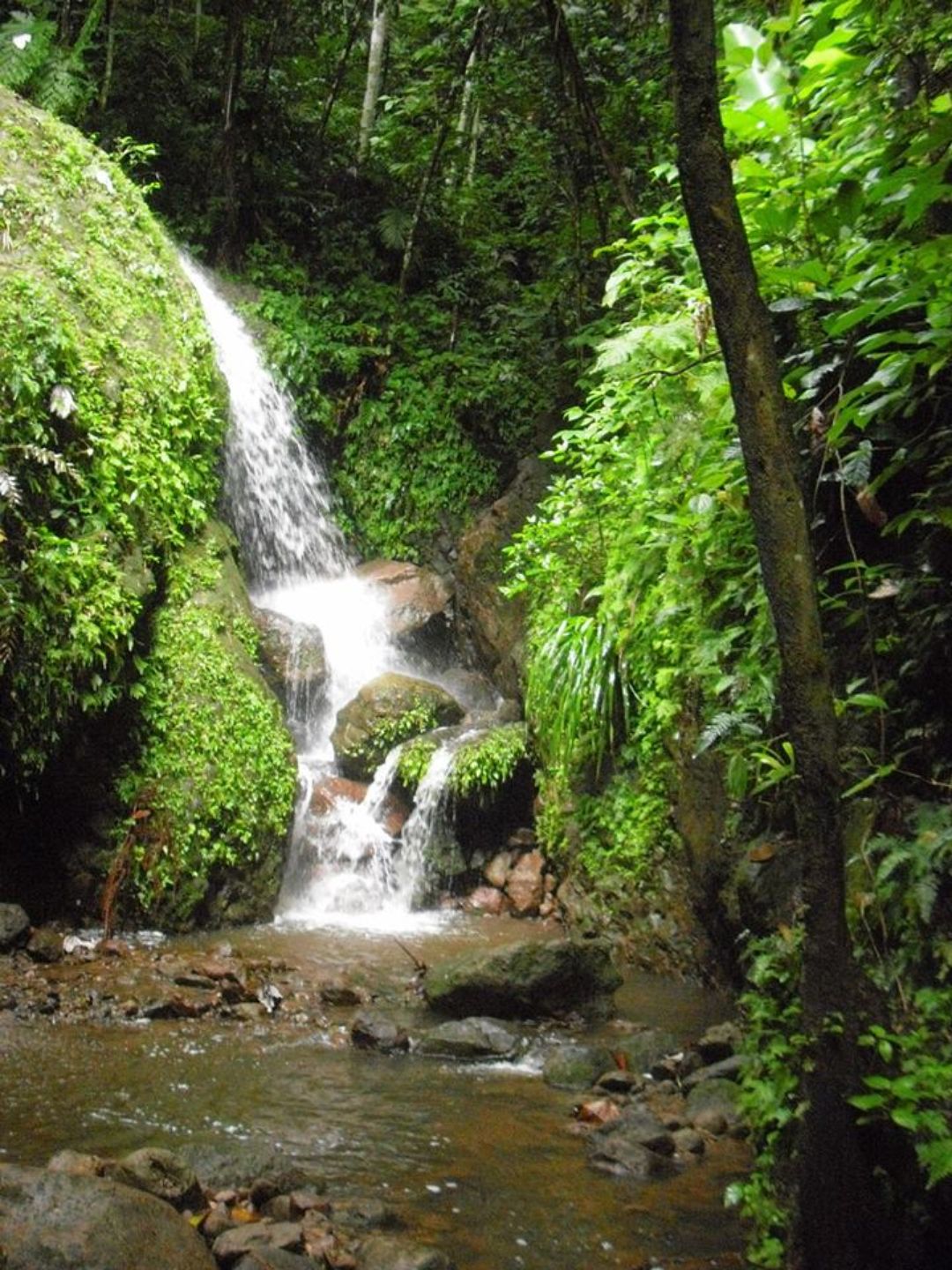
Photo: Waterfalls in the interior of the island, Credit: NTA
What you won’t see on the 36-square-mile island across the channel from St. Kitts are hordes of tourists, high-rise hotels and big buffets. What you will see are volcano peaks, cloud-capped mountains and a rainforest studded with bygone reminders like sugar mills and cobblestones. For an exhilarating mountain high, Nevis Adventure Tours offers “Up and Down” to Nevis Peak, an active volcano 3,232 feet above sea level. With a few challenging sections, the 4- to 5-hour tour offers views on a clear day to Montserrat, St. Kitts and Antigua. For more experienced hikers, “Up and Over” is a longer climb over the mountain, and for history buffs, “Russell’s Rest Nature Hike” starts at the ruins of the 300-year-old Russell Plantation and continues on the Atlantic side through rainforest that is home to monkeys, cocoa trees and waterfalls.
Tobago
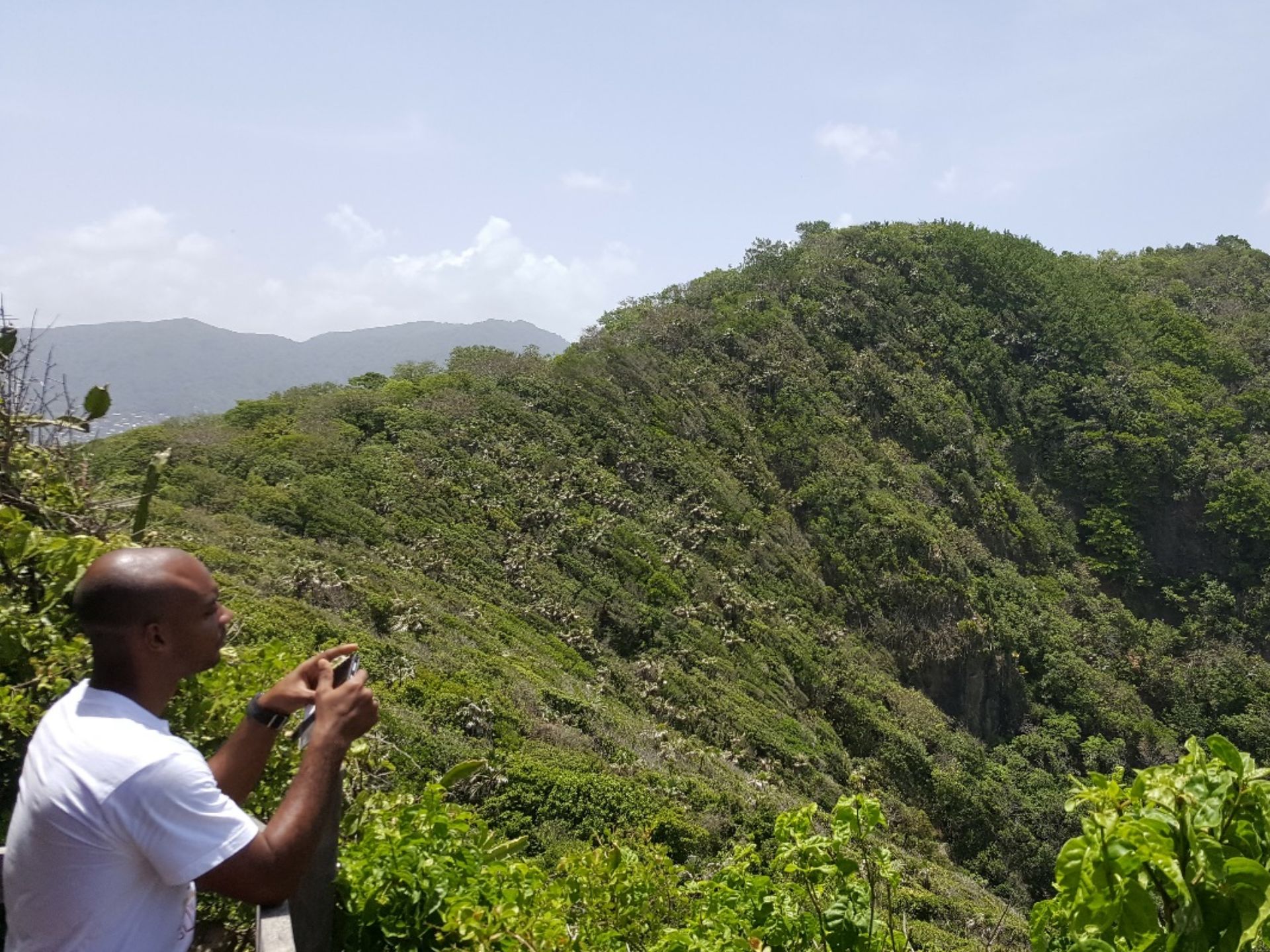
Photo: Steep cliffs on Little Tobago, Credit: National Trust TT
Just north of Venezuela, Tobago is the more laid-back of the dual-island nation that includes Trinidad. On record as the “Western Hemisphere’s oldest protected rain forest,” Tobago’s Main Ridge Forest Reserve covers two-thirds of the island and is home to nearly 300 species of rare bird like the yellow thrush and the blue-backed mankin. A mile from the northeast shore and even more laid-back than Tobago, Little Tobago was once home to a cotton plantation and today is one of the premier seabird sanctuaries in the Caribbean. Star-shaped and mountainous, the island is uninhabited apart from the birds that were originally brought from New Guinea in 1909 to protect them from poaching. For birdwatchers and those who travel with them, Peter Cox Wildlife Tours offers 2.5-hour trips to see dozens of nesting species that live on the 250-acre island. Equipped with spotting scopes and binoculars, guides accompany tourists on glass-bottom boats that make the 20-minute trip across the Atlantic from the fishing village of Speyside. Along the way, you’ll pass Goat Island, where according to local legend the large white house that sits in the middle was the former home of Ian Fleming, who wrote the James Bond spy thrillers.
On dry land, tour-goers keep their eyes peeled for green iguanas, leaf-toed geckos, parrot snakes, extra-large hermit crabs and dozens of colorful birds like red-billed tropics with their chalk-white feathers and tropical mockingbirds often heard singing in the night. Taking tourists on nature treks for more than 30 years, Peter Cox says his tour company upholds stringent eco-friendly standards: “Our guides do not use tape recorders and laser lights to call the animals, and we pay very close attention to human impact on the island.” The surrounding waters are clear and shallow for snorkeling in the Angel Reef with one of the largest brain corals left in the world, and Japanese Garden where manta rays, pufferfish, moray eels and the occasional shark swim in the nutrient-rich waters. For those who like to eat local, make time on the way back for a stop at Jemma’s Seaview Treehouse Kitchen for broiled lobsters and a wedge of mac ‘n” cheese layered with slices of breadfruit. Tours run from $70 to $120, depending on the size of the group.

